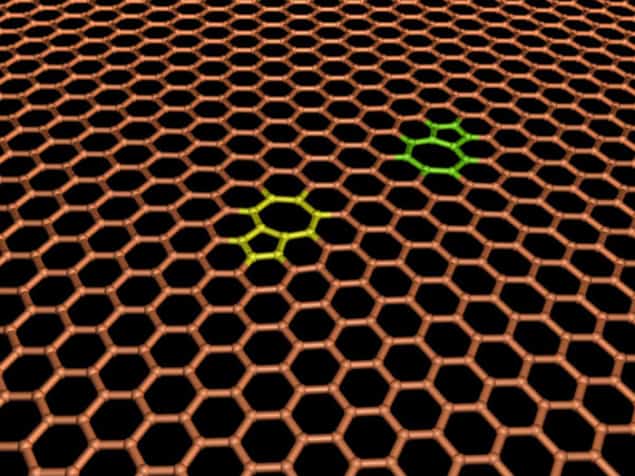
Researchers in the UK and Japan have succeeded in tracking dislocations with unprecedented resolution as the defects move through graphene – a sheet of carbon just one atom thick. The work may help scientists better understand plasticity in 2D structures and how dislocation motion affects the mechanical properties of graphene and other technologically important materials.
The strength of a material and how it deforms under a load are often related to how dislocations – lattice defects such as an extra half plane of atoms – move through a material. Although dislocations in 3D samples have been studied using high-resolution transmission electron microscopy (TEM), it is much more challenging to examine 2D materials such as graphene. This is because the high-energy electrons normally used for imaging in TEM will quickly destroy carbon-based nanomaterials like graphene.
In order to study graphene, the accelerating voltage of the electrons in TEM needs to be reduced to relatively low values of about 80 kV to limit damage. The problem, however, is that doing TEM with such low-energy electrons results in an increase in spherical and chromatic aberrations that blur the images and reduce their spatial resolution. Although newer electron microscopes contain in-built hardware that can correct for spherical aberrations, this resolution is still not high enough to allow scientists to locate the exact positions of individual atoms in graphene.
Reducing energy spread
Now, Jamie Warner and colleagues at the University of Oxford have teamed up with a researcher at the Japan Electron Optics Laboratory in Tokyo to reduce chromatic aberration effects by passing the electrons through a monochromator and so improve spatial resolution. The technique reduces the energy spread of the electrons before they actually hit the sample.
“Our approach allows for sub-angstrom resolution at 80 kV and the ability to pinpoint the exact position of single carbon atoms within the graphene lattice,” explains Warner. “We used this enhanced resolution to study edge dislocations (a unique form of defect that distorts the lattice structure) in graphene for the first time with true atomic resolution.”
The researchers were also able to measure carbon–carbon bond elongation and compression within a dislocation too, and map the strain caused by the dislocations using an image-processing technique known as geometrical phase analysis (GPA). “We found that we could not only map the full strain tensor from the dislocations, but also study how the strain fields moved as dislocations shift positions, or ‘creep and climb’, within the lattice,” says Warner. Comparing these experimental strain maps with those predicted by theory shows a good match with the so-called Foreman dislocation model, he adds.
Impurities are next
The researchers say that the results provide a detailed map of how the atoms in dislocations are configured in graphene, and will help them better understand how plasticity emerges in the material. They are now studying single substitutional impurity atoms in graphene and how these induce strain within the lattice. “We have already discovered that only some defect structures are stable,” says Warner. “We can readily create highly disordered regions within graphene, but in many cases these can ‘unwind’ and revert back to a pristine lattice.”
The team is also busy compiling a catalogue of defect and impurity families in the carbon material.
The results are published in Science.



